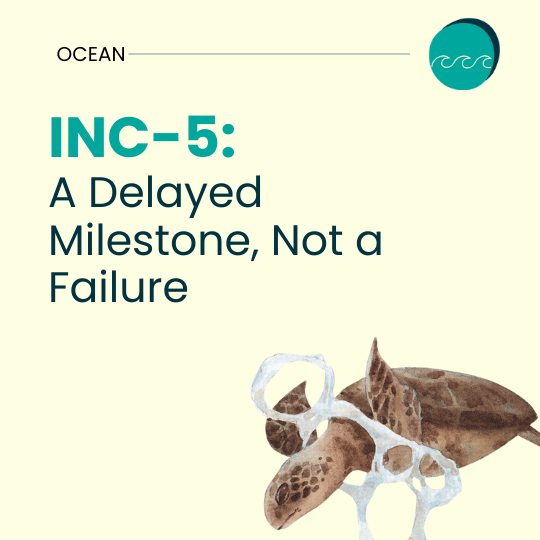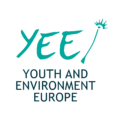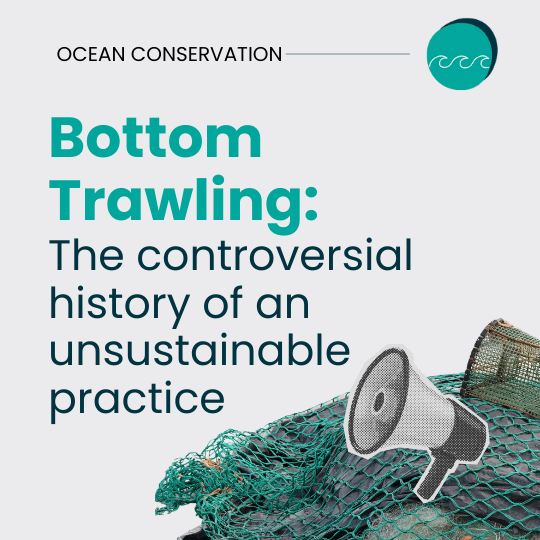
This session was supposed to be the “end of the beginning,” when the world would step out with the first-ever global plastic



Bottom trawling is one of the most destructive fishing methods used worldwide, with as much as 40% of sea life being removed during a single trawling pass. The large weighted nets being dragged across the ocean floor are responsible for vast amounts of by-catch, discards and collapse of fish stocks.
Despite the restriction of human activities to conserve their rich biodiversity, Marine Protected Areas (MPAs) suffer greatly from the effects of bottom trawling. Even with its devastating and irreversible consequences, bottom trawling is still allowed in 90 percent of all offshore EU MPAs.
Bottom trawling is responsible for reducing the complexity, productivity, and biodiversity of seafloor habitats, with sponges and corals facing the highest impacts. Unfortunately, most affected ecosystems are unable to recover from the damage they endure. For the few that do manage to recover, the estimated recovery time is estimated to be between 7.5 and 15 years.
Bottom trawling not only causes significant harm to marine life, but according to a recent study, it also contributes up to 370 million metric tons of carbon dioxide to the atmosphere annually. The same study discovered that within an average of years, between 55 and 60 percent of emissions from underwater bottom trawling are released into the atmosphere, while the remaining CO2 can lead to more acidic conditions in the areas where it has been released, thus clearly contributing to the greenhouse effect and global warming of our planet.
Currently, there only exists an EU-wide ban on bottom trawling at depths greater than 800 metres, however the EU aims to extend a bottom trawling ban to all its MPAs by 2030, urging its Member States to draw up national roadmaps towards a bottom trawling plan as part of the 2023 Marine Action Plan (find our article about the EU’s Marine Action Plan here).
At the moment, Greece and Sweden are the only EU Member States to have announced a ban on bottom trawling in all their national marine parks and protected areas, with Sweden extending the ban to all its territorial waters (up to 12 nautical miles from the shore). This marks a significant step forward for these countries in the protection of marine biodiversity.
In contrast, the majority of EU countries have missed this year’s March deadline to outline national roadmaps for phasing out bottom trawling. The EU’s national governments need to demonstrate greater ambition for marine protection and commit to the Marine Action Plan and the EU Biodiversity Strategy 2030.
Protecting 30% of its marine areas by 2030 is incompatible with the highly damaging practice of bottom trawling, therefore the European Commission must take further action to ensure compliance with the existing legislation in countries that still permit bottom trawling inside the MPAs of their territorial waters.
As representatives of young people committed to environmental protection, Youth and Environment Europe and Global Youth Biodiversity Network Europe strongly advocate for the conservation of marine ecosystems and the promotion of sustainable fishing practices. Our position on the issue of bottom trawling comprises the following:
Bottom trawling is a destructive practice that poses a significant threat to marine ecosystems and biodiversity.
As YEE and GYBN Europe, we urge EU Member States to prioritise ocean conservation and take decisive action. We firmly believe that young people, as the voice of the future, hold the power to enact the change they envision. With the recent EU elections, it is crucial for youth to push the newly elected MEPs to take action towards the protection of our oceans. Advocacy for stronger regulations, such as those in the Marine Action Plan, is essential to safeguard marine ecosystems. Join advocacy campaigns, engage with environmental organisations and use your voice to demand the preservation of our seas.

This session was supposed to be the “end of the beginning,” when the world would step out with the first-ever global plastic

Bottom trawling involves dragging a weighted net or a rigid frame along the ocean floor. Despite its economic advantages, bottom trawling is

YEE Calls for Ambitious National Roadmaps for EU Marine Action Plan Implementation, including a ban on bottom trawling in MPAs

This session was supposed to be the “end of the beginning,” when the world would step out with the first-ever global plastic treaty, which did not happen. However, calling INC-5 a failure would overlook the complexities of negotiating and treaty-making and the leap forward that took place at INC-5.

Bottom trawling involves dragging a weighted net or a rigid frame along the ocean floor. Despite its economic advantages, bottom trawling is contentious due to its considerable environmental and ecological impacts.
 YEE aims to unite environmental youth non-profit organisations in Europe in order to enhance international cooperation, increase knowledge about the climate crisis, raise awareness of environmental problems and to strengthen participation of youth in environmental decision-making.
YEE aims to unite environmental youth non-profit organisations in Europe in order to enhance international cooperation, increase knowledge about the climate crisis, raise awareness of environmental problems and to strengthen participation of youth in environmental decision-making.
Vinohradská 2165/48
120 00 Praha 2 – Vinohrady
Czech Republic
E-mail: yee@yeenet.eu


Financially supported by the European Youth Foundation of the Council of Europe. The views expressed do not necessarily reflect the official position of the Council of Europe

 Everything you need to know about air pollution in the EU
Everything you need to know about air pollution in the EU 
